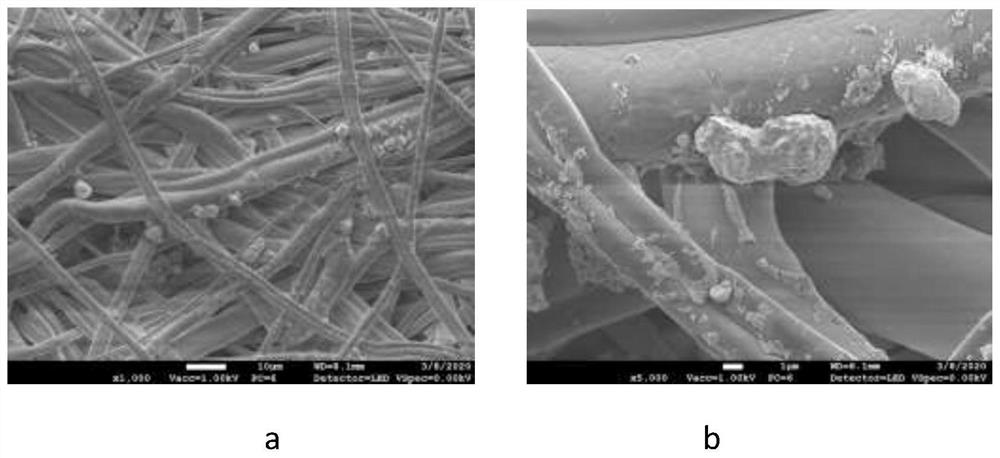Melt-blown fabric for adsorbing and inactivating viruses and application
A technology of melt-blown cloth and virus, which is applied in the field of masks
- Summary
- Abstract
- Description
- Claims
- Application Information
AI Technical Summary
Problems solved by technology
Method used
Image
Examples
preparation example Construction
[0036] The preparation of the melt-blown cloth for absorbing and inactivating virus of the present invention comprises the following steps:
[0037] 1. Preparation of multi-level material particles
[0038] (1) Preparation of nucleus: NH 4 ZSM-5 molecular sieve (SiO 2 / Al 2 o 3 =25, the specific surface area is 550m 2 / g, particle size 2.3μm, average pore size 0.54nm) mixed with 0.35mol / L NaOH solution at a volume ratio of 1:30, heated and stirred in a water bath at 75°C for 2 hours, filtered the mixed solution, and washed the solid until neutral , after drying at 120°C for 6 hours and calcining at 500°C for 2 hours, a hierarchical porous molecular sieve, which is the core of the catalytic material, was obtained. Measure its average mesopore diameter 24.3nm with the automatic physical adsorption instrument (US Micromeritics company, ASAP 2460) that can measure the distribution and pore volume of mesopore and micropore, the pore distribution is 3.2-48.7nm, and the average ...
Embodiment 1-4
[0054] Table 1
[0055]
[0056]
[0057] Table 2
Embodiment 5-20
[0059]
[0060]
[0061]
[0062] 2. Adsorption and inactivation test for viruses
[0063] 1. Virus preparation:
[0064] Prepare TCID separately 50 COVID-19 virus liquid (4.37×10 8 copies / ml) and TCID 50 The tools lentivirus (pLenti) virus solution (7×10 9 copies / ml) is used for the adsorption and inactivation test of novel coronavirus and lentivirus by powder materials and melt-blown cloth;
[0065] 2. Prepare 9 kinds of melt-blown cloth, numbered WF-1~WF-9, weigh 50 mg of each material, and 50 mg of the melt-blown cloth substrate of non-embedded core-shell structure hierarchical porous catalytic material, after curling and folding, respectively Put into a sterile 1.5ml EP tube, add 1.0mL TCID dropwise 50 The lentivirus (pLenti) virus solution was reacted at room temperature for 30 minutes, and the mixture of the test substance and the virus solution was shaken once every 5 minutes during the period to ensure the full effect of the material and the virus. At t...
PUM
| Property | Measurement | Unit |
|---|---|---|
| diameter | aaaaa | aaaaa |
| pore size | aaaaa | aaaaa |
| pore size | aaaaa | aaaaa |
Abstract
Description
Claims
Application Information
 Login to View More
Login to View More - R&D
- Intellectual Property
- Life Sciences
- Materials
- Tech Scout
- Unparalleled Data Quality
- Higher Quality Content
- 60% Fewer Hallucinations
Browse by: Latest US Patents, China's latest patents, Technical Efficacy Thesaurus, Application Domain, Technology Topic, Popular Technical Reports.
© 2025 PatSnap. All rights reserved.Legal|Privacy policy|Modern Slavery Act Transparency Statement|Sitemap|About US| Contact US: help@patsnap.com



